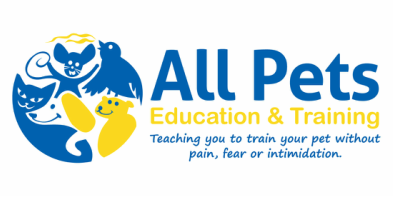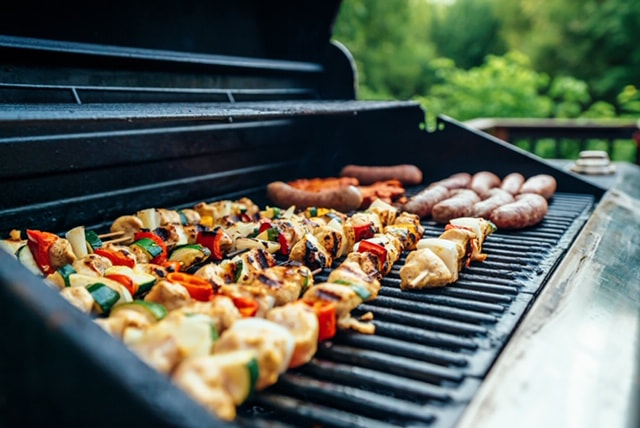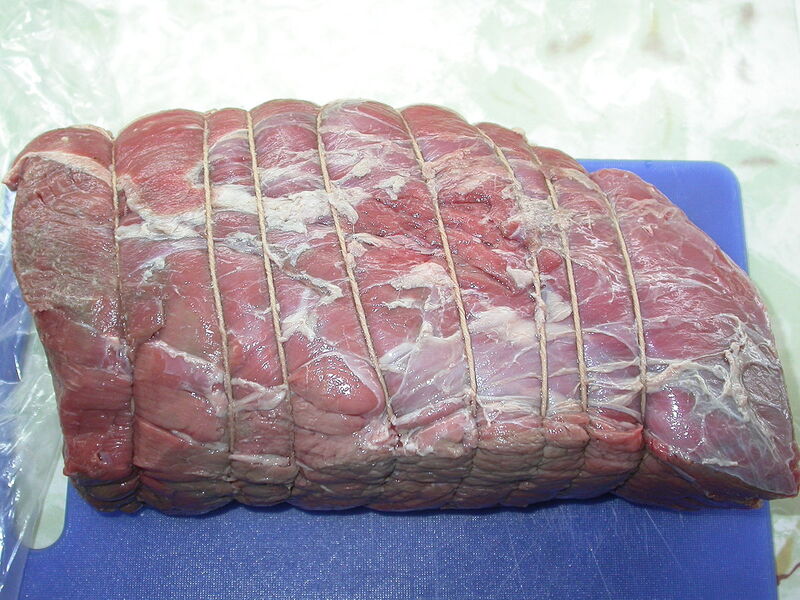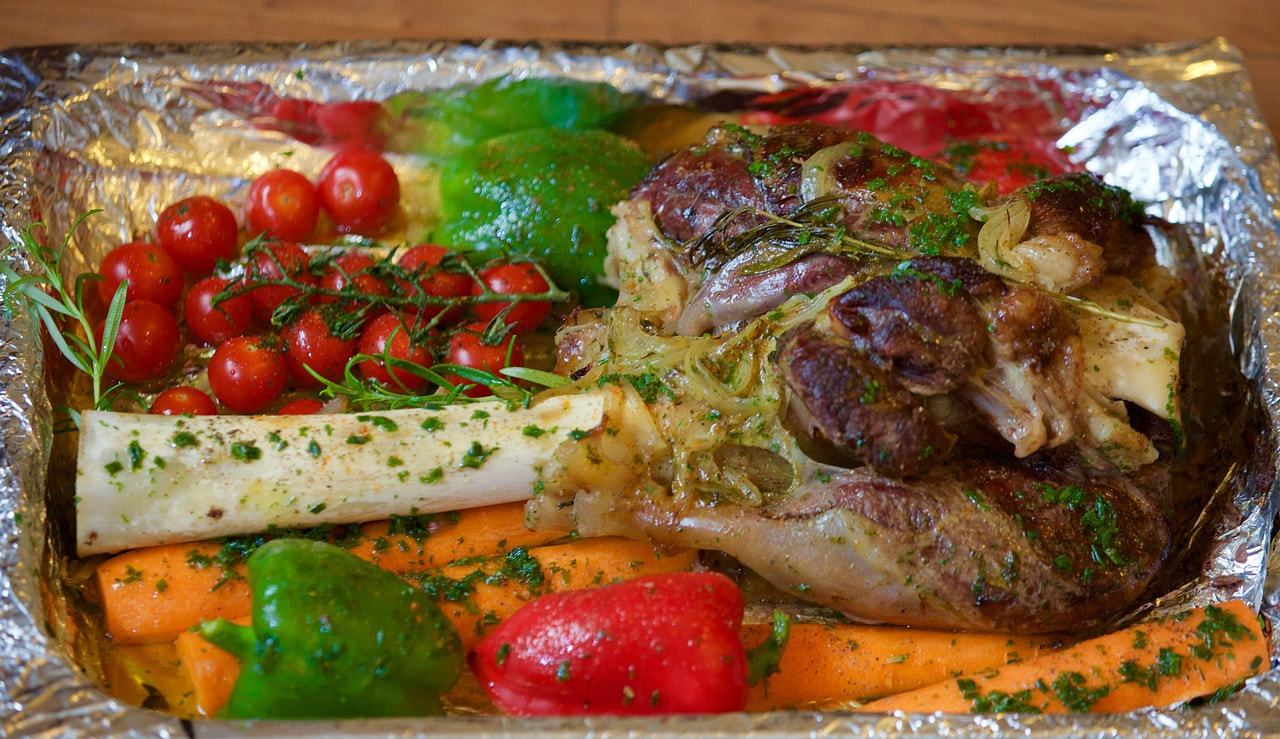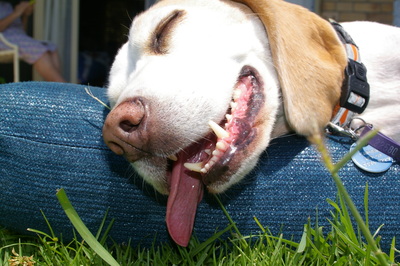Aussie Aussie Aussie Oi Oi Oi
Australia Day and your pets
Updated 2018
Australia Day is often a time for celebration amongst us Aussies. However, during this day, several of our canine & feline buddies may be put at risk. Resulting in an Emergency trip to your vet and $$$$.
Some things to consider:
Have you considered that some foods we serve at our Australia Day parties, could be potentially harmful for you pets.
Foods to avoid
Any rich or high fat food can cause your pet problems including mild gastro intestinal upsets, vomiting, diarrhoea or pancreatitis (a painful and potentially life threatening disease). Don’t forget the grease trap of the BBQ.
Beware of cooked bones (lamb shanks/ribs/cutlets etc). These can cause intestinal obstructions, perforation (resulting in peritonitis) or constipation.
Ensure your dog/cat can’t access any of the left over meat dripping or fat – this can lead to vomiting, diarrhoea and potentially fatal pancreatitis.
Meat soaked strings for your roast. These taste delicious to your pets and can cause a linear foreign body requiring emergency surgery.
Watch out if you serve/eat skewered meat/veg and your pet is around. The rubbish raider or opportunist pet may swallow a skewer. This can be life threatening – your pets oesophagus, stomach or intestine may be pierced, resulting in a severe infection known as peritonitis.
Alcohol – even in small quantities can cause intoxication in your pet. Now, I’m sure you won’t deliberately give your pet a drink, however remember they are opportunists, and if it tastes good, they’ll drink it. Clean up after parties and don’t leave drinks at a height your pet can reach. Alcohol can kill your pet.
Some things to consider:
- Have you considered what could make your pet sick?
- Do you know when/if your regular vet clinic is open on Australia Day?
- Do you know where the afterhours vets are located?
Have you considered that some foods we serve at our Australia Day parties, could be potentially harmful for you pets.
Foods to avoid
Any rich or high fat food can cause your pet problems including mild gastro intestinal upsets, vomiting, diarrhoea or pancreatitis (a painful and potentially life threatening disease). Don’t forget the grease trap of the BBQ.
Beware of cooked bones (lamb shanks/ribs/cutlets etc). These can cause intestinal obstructions, perforation (resulting in peritonitis) or constipation.
Ensure your dog/cat can’t access any of the left over meat dripping or fat – this can lead to vomiting, diarrhoea and potentially fatal pancreatitis.
Meat soaked strings for your roast. These taste delicious to your pets and can cause a linear foreign body requiring emergency surgery.
Watch out if you serve/eat skewered meat/veg and your pet is around. The rubbish raider or opportunist pet may swallow a skewer. This can be life threatening – your pets oesophagus, stomach or intestine may be pierced, resulting in a severe infection known as peritonitis.
Alcohol – even in small quantities can cause intoxication in your pet. Now, I’m sure you won’t deliberately give your pet a drink, however remember they are opportunists, and if it tastes good, they’ll drink it. Clean up after parties and don’t leave drinks at a height your pet can reach. Alcohol can kill your pet.
Other potential dangers.
Watch your pet for signs of heat stress. Our Australia day parties will often take place around a pool or involve games of back yard cricket. If you pet doesn’t know when to rest or stop playing (including running laps of the pool) he or she may quickly succumb to heat stroke. This is a distressing condition and can kill your pet.
Also watch your pets around pools. Ensure they don’t have access unless a responsible adult is around, and teach them how to get out. Supply a scamper board for them if they are too small to use the stairs, or there is only a ladder.
Watch your pet for signs of heat stress. Our Australia day parties will often take place around a pool or involve games of back yard cricket. If you pet doesn’t know when to rest or stop playing (including running laps of the pool) he or she may quickly succumb to heat stroke. This is a distressing condition and can kill your pet.
Also watch your pets around pools. Ensure they don’t have access unless a responsible adult is around, and teach them how to get out. Supply a scamper board for them if they are too small to use the stairs, or there is only a ladder.
Ok, so you’ve had a great day, you’ve got a full belly and possibly had a few too many to drink.
Please be careful with your headache medications.
The following 3 commonly used over the counter pain medications for humans can be potentially fatal to your beloved pets.
Panadol (paracetamol) can cause liver failure in dogs & cat in relatively small doses.
In dogs a toxic dose can be as little as 100mg/kg, and in cats it’s much less at 10-40mg/kg.
Nurofen (ibuprofen), can cause kidney failure in dogs & cats.
A toxic dose for dogs is 175mg/kg and in cats it is around 80mg/kg.
Aspirin (acetylsalicylic acid) can cause Gastro intestinal disturbances, hyperthermia, panting, seizures, or coma.
A toxic dose for dogs and cat is approximately 450mg/kg
When to see your vet
If your pet has chewed, swallowed or potentially chewed/swallowed any of the above medications, it is vital your pet is seen by a veterinarian immediately. Take the packet of medication with you so that your vet can see what has been taken.
You should take your pet to the vet if he/she is unwell. Don’t wait for your regular clinic to re-open as even a delay of 24 hours could put your pet’s life at risk.
Please be careful with your headache medications.
The following 3 commonly used over the counter pain medications for humans can be potentially fatal to your beloved pets.
Panadol (paracetamol) can cause liver failure in dogs & cat in relatively small doses.
In dogs a toxic dose can be as little as 100mg/kg, and in cats it’s much less at 10-40mg/kg.
Nurofen (ibuprofen), can cause kidney failure in dogs & cats.
A toxic dose for dogs is 175mg/kg and in cats it is around 80mg/kg.
Aspirin (acetylsalicylic acid) can cause Gastro intestinal disturbances, hyperthermia, panting, seizures, or coma.
A toxic dose for dogs and cat is approximately 450mg/kg
When to see your vet
If your pet has chewed, swallowed or potentially chewed/swallowed any of the above medications, it is vital your pet is seen by a veterinarian immediately. Take the packet of medication with you so that your vet can see what has been taken.
You should take your pet to the vet if he/she is unwell. Don’t wait for your regular clinic to re-open as even a delay of 24 hours could put your pet’s life at risk.
|
Symptoms of Pancreatitis include:
Symptoms of Intestinal Obstruction:
|
Symptoms of Constipation:
Symptoms of Peritonitis:
|
People – strict supervision
Some pets may become frightened or nervous around new people, loud noises etc. Set up somewhere for them that they are safe. Crates or a cool quiet room are a good idea – ensure food, enrichment toys and water are available.
Active supervision with pets and children (an adult within arm’s reach at all times). Good websites to review are:
www.familypaws.com/resources
http://drsophiayin.com/blog/entry/kids-and-dogs-how-kids-should-and-should-not-interact-with-dogs
Familarise yourself with k9 and feline body language – take steps to remove your pet from a situation if they are showing signs of concern.
Check out the Feline and Canine Body Language Pages
Supervise all guests and advise them on arrival not to sneak your pets any leftovers or treats without first asking your permission. Just think, if 20 guests sneak your small dog just a few morsels of food each you will quickly end up with a porky pooch and possibly a sick one too.
Other pets
If your pet is having “friends” over or going to another pet’s house – ensure you provide adequate supervision.
You can keep your pet safe with forward thinking and careful planning.
Some useful numbers:
RSPCA Lost and Found...........................................................................07 3426 9999
RSPCA Animal Ambulance......................................................................1300 852 188
Brisbane City Council..............................................................................07 3403 8888
Logan City Council...................................................................................1300 156 426
Moreton Bay Regional Council...............................................................07 3205 0555
Animal Emergency Service (Springwood)..............................................07 3423 1888
Animal Emergency Service (Carrara)......................................................07 5559 1599
Animal Emergency Centre (Woolloongabba).........................................07 3456 0500
Manly Road Veterinary Hospital..............................................................07 3396 9733
BVSC Emergency (Albany Creek)..............................................................07 3264 9400
Pet Emergency (Stafford)...........................................................................07 3359 5333
Some pets may become frightened or nervous around new people, loud noises etc. Set up somewhere for them that they are safe. Crates or a cool quiet room are a good idea – ensure food, enrichment toys and water are available.
Active supervision with pets and children (an adult within arm’s reach at all times). Good websites to review are:
www.familypaws.com/resources
http://drsophiayin.com/blog/entry/kids-and-dogs-how-kids-should-and-should-not-interact-with-dogs
Familarise yourself with k9 and feline body language – take steps to remove your pet from a situation if they are showing signs of concern.
Check out the Feline and Canine Body Language Pages
Supervise all guests and advise them on arrival not to sneak your pets any leftovers or treats without first asking your permission. Just think, if 20 guests sneak your small dog just a few morsels of food each you will quickly end up with a porky pooch and possibly a sick one too.
Other pets
If your pet is having “friends” over or going to another pet’s house – ensure you provide adequate supervision.
- Dog fights, are not a pleasant experience for anyone, and you may be injured whilst trying to break them up.
You can keep your pet safe with forward thinking and careful planning.
Some useful numbers:
RSPCA Lost and Found...........................................................................07 3426 9999
RSPCA Animal Ambulance......................................................................1300 852 188
Brisbane City Council..............................................................................07 3403 8888
Logan City Council...................................................................................1300 156 426
Moreton Bay Regional Council...............................................................07 3205 0555
Animal Emergency Service (Springwood)..............................................07 3423 1888
Animal Emergency Service (Carrara)......................................................07 5559 1599
Animal Emergency Centre (Woolloongabba).........................................07 3456 0500
Manly Road Veterinary Hospital..............................................................07 3396 9733
BVSC Emergency (Albany Creek)..............................................................07 3264 9400
Pet Emergency (Stafford)...........................................................................07 3359 5333
Aussie Aussie Aussie Oi Oi Oi !!!
Have a safe & wonderful day!
Have a safe & wonderful day!
References
Allan, T. (2014). Body Language. [online] All Pets Education and Training. Available at: http://www.allpetseducationandtraining.com.au/body-language.html [Accessed 28 Nov. 2014].
Familypaws.com, (2014). Family Paws-Family Paws resources. [online] Available at: http://familypaws.com/resources/ [Accessed 28 Nov. 2014].
Khan, S. (2014). Analgesics (Toxicity): Toxicities from Human Drugs: Merck Veterinary Manual. [online] Merckmanuals.com. Available at: http://www.merckmanuals.com/vet/toxicology/toxicities_from_human_drugs/analgesics_toxicity.html [Accessed 25 Jan. 2015].
Tilley, L. and Smith, F. (2000). The 5-minute veterinary consult. Philadelphia: Lippincott Williams & Wilkins.
Yin, S. (2014). Kids and Dogs: How Kids Should and Should Not Interact with Dogs. [online] Dr. Sophia Yin. Available at: http://drsophiayin.com/blog/entry/kids-and-dogs-how-kids-should-and-should-not-interact-with-dogs [Accessed 28 Nov. 2014].
Photos: my own, scamper ramp (RSPCA), 123rf and unsplash
Allan, T. (2014). Body Language. [online] All Pets Education and Training. Available at: http://www.allpetseducationandtraining.com.au/body-language.html [Accessed 28 Nov. 2014].
Familypaws.com, (2014). Family Paws-Family Paws resources. [online] Available at: http://familypaws.com/resources/ [Accessed 28 Nov. 2014].
Khan, S. (2014). Analgesics (Toxicity): Toxicities from Human Drugs: Merck Veterinary Manual. [online] Merckmanuals.com. Available at: http://www.merckmanuals.com/vet/toxicology/toxicities_from_human_drugs/analgesics_toxicity.html [Accessed 25 Jan. 2015].
Tilley, L. and Smith, F. (2000). The 5-minute veterinary consult. Philadelphia: Lippincott Williams & Wilkins.
Yin, S. (2014). Kids and Dogs: How Kids Should and Should Not Interact with Dogs. [online] Dr. Sophia Yin. Available at: http://drsophiayin.com/blog/entry/kids-and-dogs-how-kids-should-and-should-not-interact-with-dogs [Accessed 28 Nov. 2014].
Photos: my own, scamper ramp (RSPCA), 123rf and unsplash
